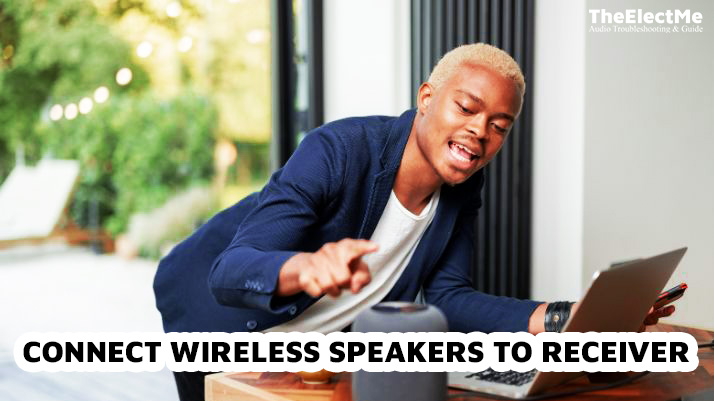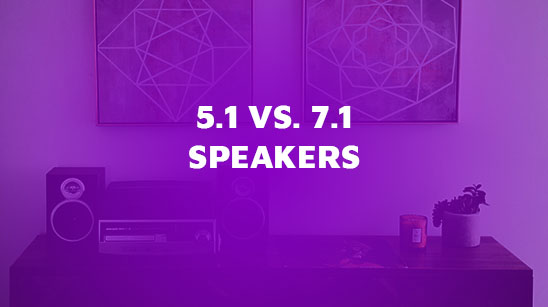Connect wireless speakers to receiver is a skill that can significantly enhance the audio experience at home or in a business setting. It allows for flexibility, convenience, and high-quality sound without the hassle of wires. This guide aims to provide a comprehensive understanding of achieving such a connection.
Understanding this process is crucial for several reasons. First, it can lead to better sound production due to less interference, as experts from The Product Analyst noted. Additionally, wireless technology helps keep living or working spaces tidy and free from cable clutter.

Moreover, knowing how to connect these devices can also save money on professional installation services. Following the simple steps outlined in this guide, anyone can easily set up their wireless speakers with a receiver.
What are Wireless Speakers?
Wireless speakers are popular in modern homes due to their convenience and sleek design. As the name suggests, these speakers do not require physical cable connections to play audio.
Instead, they use wireless technology such as Bluetooth or Wi-Fi to receive sound signals from a source device like a smartphone, laptop, or receiver. This allows for easy placement around a room without worrying about cable lengths or outlets.
A receiver is a critical component in any sound system.
It serves as the control hub for all your audio and video sources. The receiver takes the input from these sources, amplifies the signal, and then sends it to the speakers.
In simpler terms, it acts as a bridge between your source device and speakers, ensuring clear and evenly distributed audio. You first understand the wireless receiver and connect the speaker to the wireless receiver.
By understanding the roles of these two components, it becomes easier to set up a home sound system that delivers top-notch audio quality.
Different Methods Of Connecting Wireless Speakers To A Receiver
There are different methods of connecting wireless speakers to a receiver, depending on the type of speaker and receiver you have. Here are the most common methods:

Connecting via Bluetooth
Bluetooth is a common method for connecting wireless speakers to a receiver. To start the process, activate the Bluetooth pairing mode on the speakers. Simultaneously, turn on the Bluetooth transmitter mode on the receiver. Once both devices are in pairing mode, they should recognize each other and connect automatically.
The specific steps may vary slightly depending on the models of your speakers and receiver.
However, the general process involves going into the setup menu of the receiver, selecting “General,” and then “Bluetooth Transmitter.”
Set the transmitter option to “ON” and select the device list to choose the speakers. Once paired, audio can be streamed directly from the receiver to the speakers.
Utilizing Wi-Fi for Connection
Wi-Fi provides another way to connect wireless speakers to a receiver. This method often delivers better sound quality than Bluetooth, as Wi-Fi can handle higher bandwidth. However, it might require more initial setup.
To connect via Wi-Fi, the speakers and the receiver must be on the same network. Some receivers have built-in Wi-Fi capability, while others may require an adapter. Once connected to the same network, use the receiver’s interface to select the wireless speakers and establish a connection.
Some artists submit their music to the radio station to gain popularity. They follow technical procedures and submit it to well-known stations and earn money.
Using Streaming Devices for Multi-Speaker Systems
For a multi-speaker system, streaming devices can be beneficial. These devices allow you to stream music or other audio content to multiple speakers simultaneously, creating a surround sound experience.
Connect the streaming device to the receiver to set up a multi-speaker system. Ensure all speakers are compatible with the streaming device and connect them using Bluetooth or Wi-Fi, following the steps outlined above.
Once everything is connected, audio can be streamed from the receiver, through the streaming device, and out to the various speakers.
Some Ihome speaker systems offer several options for connecting your devices, including Bluetooth, WiFi, and a wired connection. You can use an Ihome speaker to connect several devices, including smartphones, tablets, or laptops, without the need for any physical cable.
Advanced Setup Tips
If you are looking for more advanced ways to connect your wireless speakers to a receiver, here are a few tips:
Setting Up Wireless Rear Speaker and Subwoofer
Configuring a wireless rear speaker and subwoofer with a receiver can enhance the depth of your audio experience. Here’s how to do it:
- Connect the receiver to your source device (like a TV or computer) using an HDMI cable or other appropriate connection.
- Turn on the receiver and the wireless speakers/subwoofer, making sure they are all connected to the same network if using Wi-Fi.
- Go to the receiver’s setup menu and select “Speaker Configuration” or a similar option.
- Select the option for rear speakers and subwoofer, then choose “Wireless” if given the choice.
- Follow any on-screen prompts to complete the setup process.
Grouping Speakers for Multi Speaker Systems
Grouping speakers allows for a surround sound experience, perfect for movie nights or music listening sessions. Here’s how to group speakers for a multi-speaker system:
- Ensure all speakers are connected to the same network if using Wi-Fi or paired with the receiver if using Bluetooth.
- Access the receiver’s setup menu and navigate to the “Multi-Speaker” or “Group Speakers” setting.
- Select the speakers you want to group. This might involve ticking checkboxes next to each speaker’s name or dragging and dropping them into a group.
- Save your settings and exit the setup menu. Test your new speaker group by playing some audio.
Remember, the exact steps may vary depending on your specific devices, so refer to your user manuals if needed. Some Sonos app users remove the speaker from the Sonos app for further connecting with another device. How to remove the Sonos app with the speaker clear to explore the easy techniques.
Conclusion – Connect Wireless Speakers To Receiver
To sum up, properly connecting wireless speakers to a receiver can significantly enhance your audio experience. This guide covered the basics of wireless speakers and receivers, different methods for connection, and advanced setup tips for multi-speaker systems.
You can create a seamless and high-quality sound environment in your home by harnessing technologies like Bluetooth, Wi-Fi, and streaming devices.
Whether setting up a simple stereo system or an elaborate surround sound setup, these tips can help ensure you get the most out of your equipment. Enjoy the freedom and flexibility that wireless speakers bring to your audio experiences.



